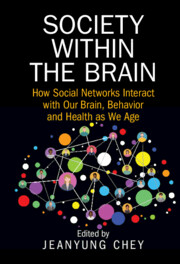According to the social brain hypothesis, the human brain includes a network designed for the processing of social information. This network includes several brain regions that elaborate social cues, interactions and contexts, i.e. prefrontal paracingulate and parietal cortices, amygdala, temporal lobes and the posterior superior temporal sulcus. While current literature suggests the importance of this network from both a psychological and evolutionary perspective, little is known about its neurobiological bases. Specifically, only a paucity of studies explored the neural underpinnings of constructs that are ascribed to the social brain network functioning, i.e. objective social isolation and perceived loneliness. As such, this review aimed to overview neuroimaging studies that investigated social isolation in healthy subjects. Social isolation correlated with both structural and functional alterations within the social brain network and in other regions that seem to support mentalising and social processes (i.e. hippocampus, insula, ventral striatum and cerebellum). However, results are mixed possibly due to the heterogeneity of methods and study design. Future neuroimaging studies with longitudinal designs are needed to measure the effect of social isolation in experimental v. control groups and to explore its relationship with perceived loneliness, ultimately helping to clarify the neural correlates of the social brain.


